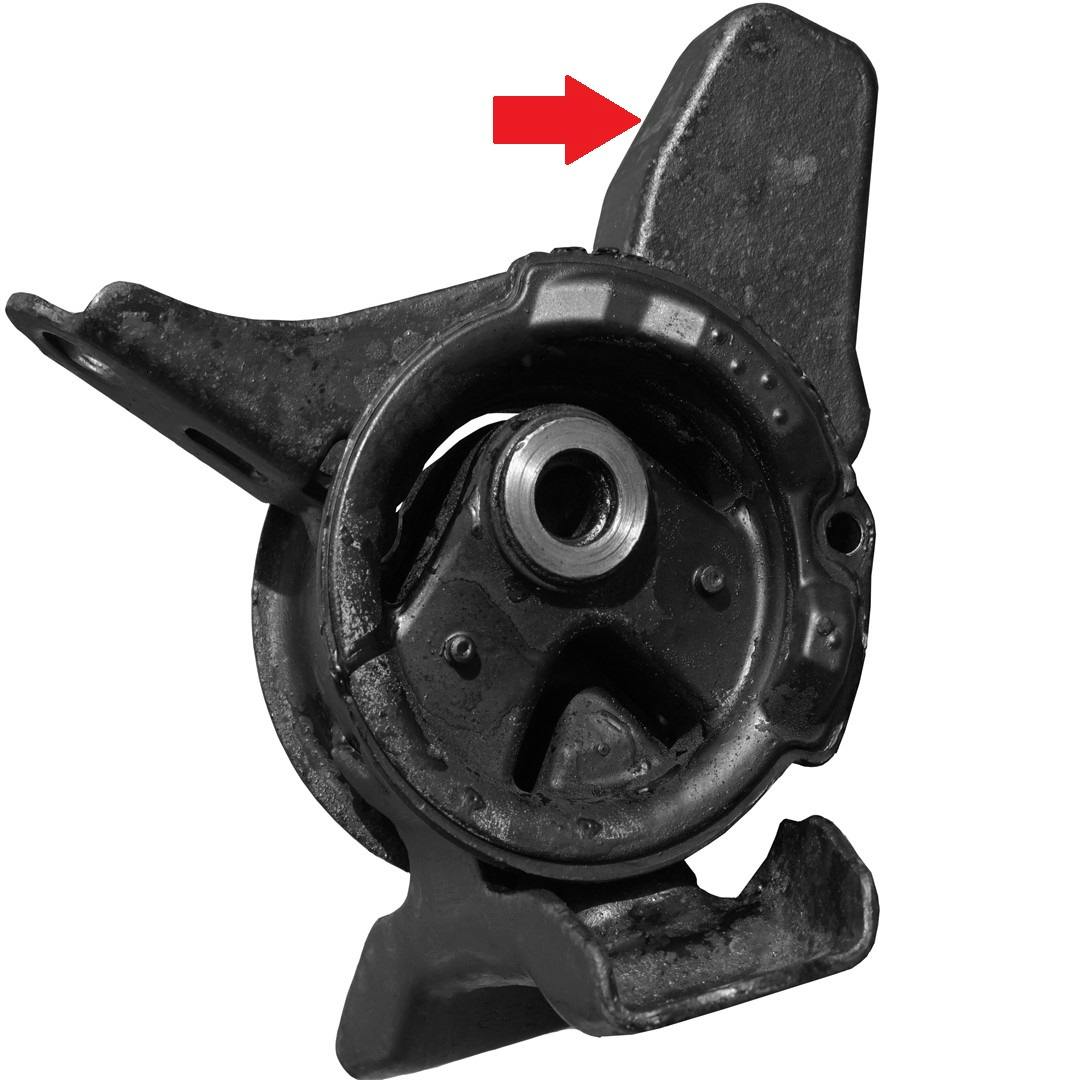Why do Some Engine Mounts have Metal Weights Attached to Them?

Have ever seen engine mounts with oddly shaped weights attached to them, such as the example shown here, and wondered what their purpose was? Not all mounts have such weights, but the reason why some do involves a series of complex relationships between vibration and harmonics, as well as between more mundane things like economies of scale and the need to reduce or limit production costs, while ensuring that (a weighted) engine mount performs as expected in terms of absorbing engine vibrations, at the same time.
One way to address these sometimes-competing requirements is to use one engine mount in several applications. However, since all cars and especially front-wheel drive vehicles vibrate in unique ways, and at different frequencies in different locations, an interchangeable engine mount may not always be able to prevent resonating frequencies from developing in some locations on some vehicles.
Resonating frequencies occur when two opposing vibrations combine to create a single frequency, and although resonating frequencies are not particularly destructive on cars, resonating frequencies can significantly reduce the useful life of an engine mount in which such frequencies occur, as well as reduce an engine mount’s ability to damp out vibrations that are not part of the resonating frequency.
So, in practice, car designers and engineers take an engine mount that is interchangeable between several applications and attach a calculated weight to it in a specific way and position to create a "weight bias" that prevents resonating frequencies from developing. As a practical matter, the added weight prevents vibrations from one particular direction from combining with vibrations coming from an opposing direction because the weight bias damps out at least one vibrational frequency.
It should be noted, though, that added weights are different for different applications, even if added weight values are the same across different applications. Thus, the positions of the added weights are calculated to damp out a specific vibrational frequency that originates from a specific location on the engine, meaning that the effect of a weight bias on any weighted engine mount is specific to a particular application.
Based on the above, great care must be taken when selecting a replacement engine mount that incorporates a weight bias. Using an engine mount with an unsuitable weight bias in an unsuitable location can cause not only annoying vibrations in a vehicle that are difficult to track down, but an unsuitably weighted mount can also affect the operation of other mounts on the engine, by reducing their effectiveness and durability.
